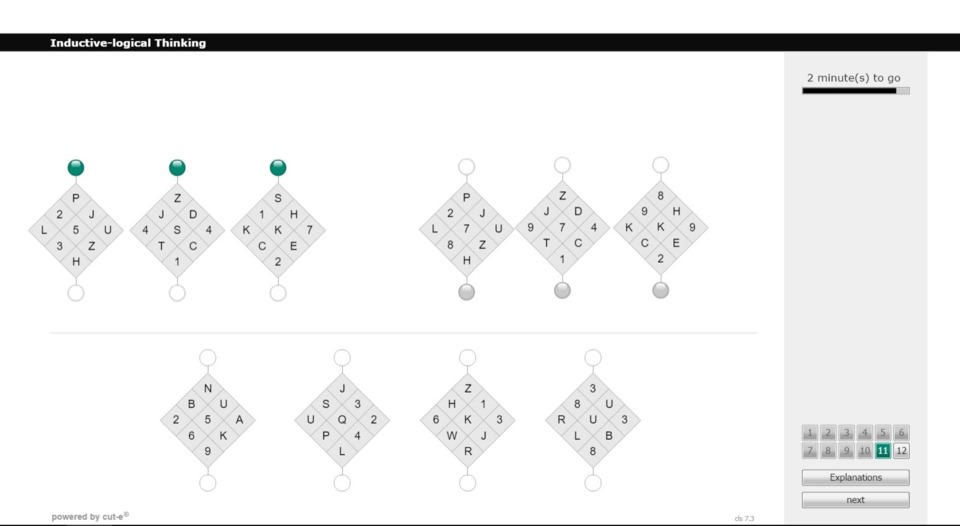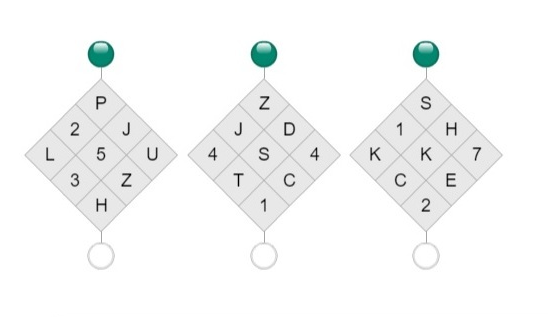Hey Duders,
I've just finished an aptitude test for a job, the third part of which was a "logical reasoning" psychometric test which involved a series of jumbled grid patterns. I had to try and attempt to complete 12 in 12 minutes, but they did advise most do not finish them all. I've included below an image of the 11th, the hardest of the lot and took me 6 of the allotted 12 alone to complete.
The Rules
Each grid has 9 numbers and/or letters included inside, and either a grey or green dot connected on the outside. The colour dot denotes that those grids follow the same pattern. So in this instance, three of the grids denoted green follow one pattern, while the three grey ones follow another, a different one. The four grids listed below the line must be coloured either grey or green and any could fit into either pattern. The user is tasked to figure out what the pattern linking each grid group is, then applying this to the ones below and figuring out whether they are green, or grey.

It may interest many of you duders just for fun, as to which is which. Anyone fancy giving it a go?

Log in to comment